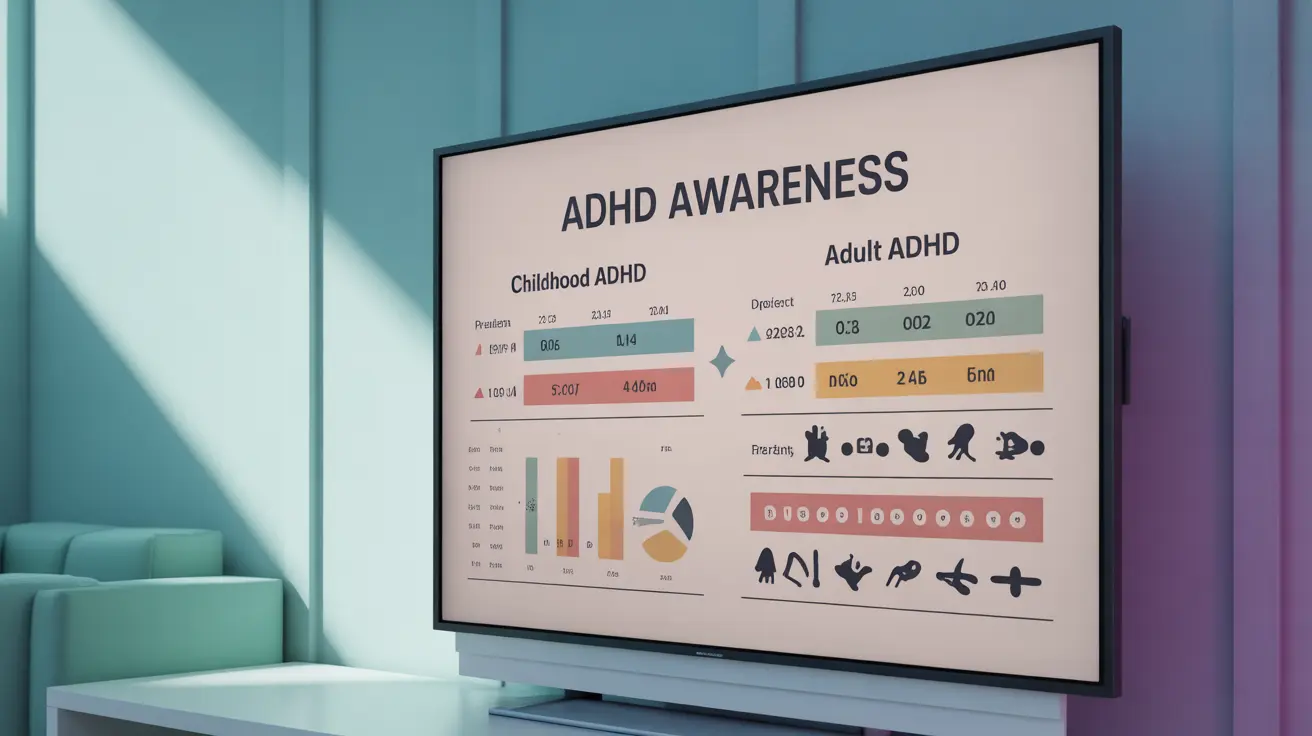Attention-deficit/hyperactivity disorder (ADHD) is a complex neurodevelopmental condition that affects millions of children and adults across the United States. Understanding the facts and statistics surrounding ADHD can help promote better awareness, early detection, and appropriate treatment approaches for those affected.
Let's explore some fascinating insights about ADHD prevalence, diagnosis patterns, and treatment options that highlight the importance of recognizing and addressing this condition effectively.
ADHD Prevalence in American Children
Recent studies have revealed significant patterns in ADHD diagnoses among U.S. children. Approximately 9.4% of children aged 2-17 years have been diagnosed with ADHD, representing about 6.1 million children nationwide. This makes ADHD one of the most common neurodevelopmental disorders in childhood.
The diagnosis rates have shown a steady increase over the past two decades, with some experts attributing this rise to improved awareness and diagnostic criteria rather than an actual increase in ADHD cases.
Regional Variations in ADHD Diagnosis
ADHD diagnosis rates vary considerably across different regions of the United States. The highest rates are typically found in the Southern states, where some areas report diagnosis rates of up to 14% of children. In contrast, Western states generally show lower diagnosis rates, averaging around 7%.
- Access to healthcare services
- Cultural attitudes toward mental health
- Local diagnostic practices
- Educational system policies
Gender Differences in ADHD Diagnosis
One of the most striking patterns in ADHD diagnosis is the significant difference between boys and girls. Boys are nearly three times more likely to receive an ADHD diagnosis compared to girls. However, this disparity might not accurately reflect the true prevalence of ADHD across genders.
- Girls typically show more inattentive symptoms
- Boys often display more hyperactive-impulsive behaviors
- Girls' symptoms may be more likely to be overlooked or misidentified
- Girls might be diagnosed later in life compared to boys
ADHD Throughout the Lifespan
Contrary to earlier beliefs, ADHD is not just a childhood condition. About 60% of children with ADHD continue to experience symptoms into adulthood. However, the manifestation of symptoms often changes over time.
- Difficulty with time management
- Problems with organization
- Challenges in maintaining focus during work
- Relationship difficulties
- Impulsive decision-making
Treatment Approaches for ADHD
Modern ADHD treatment typically involves a multimodal approach, combining various interventions tailored to individual needs. The most common treatment options include:
- Behavioral therapy
- Medication (such as stimulants or non-stimulants)
- Educational support services
- Parent training programs
- Lifestyle modifications
Frequently Asked Questions
What are some interesting facts about how common ADHD is among children in the United States? ADHD affects approximately 9.4% of U.S. children aged 2-17 years, with about 6.1 million diagnosed cases. The prevalence has increased significantly since the 1990s, making it one of the most common childhood neurodevelopmental disorders.
How does ADHD diagnosis and treatment vary across different U.S. regions? Southern states show the highest diagnosis rates (up to 14%), while Western states have lower rates (around 7%). These variations may be due to differences in healthcare access, cultural factors, and diagnostic practices across regions.
What are the differences in ADHD diagnosis rates between boys and girls? Boys are diagnosed with ADHD approximately three times more frequently than girls. This difference may be partly due to varying symptom presentations between genders and potential underdiagnosis in girls.
Can ADHD symptoms continue into adulthood, and how do they change over time? Yes, about 60% of children with ADHD continue to experience symptoms in adulthood. Symptoms often evolve from obvious hyperactivity to more subtle challenges with organization, time management, and focus.
What types of treatment options are available for children diagnosed with ADHD? Treatment options include behavioral therapy, medication, educational support services, parent training programs, and lifestyle modifications. Most effective treatment plans combine multiple approaches tailored to the individual's needs.




